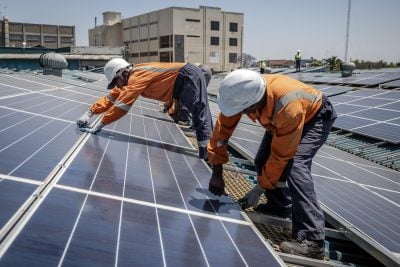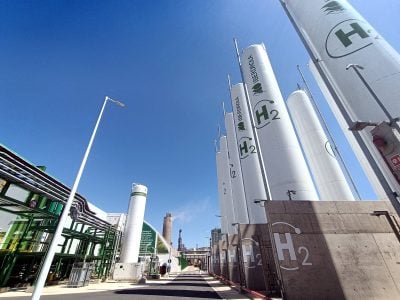Doing business in a blackout is challenging. Manufacturing shuts down without generators. Signing a contract in a dim room can seem ominous. Driving late at night in downtown Sandton, Johannesburg, without traffic lights to guide you can be – at the very least – disconcerting.
This has been what South Africa’s business community has been grappling with for some time. But after years of load shedding and rolling blackouts – the intentional shutting down of electricity to prevent country-wide power cuts – by state-owned power company Eskom, there may be light at the end of the proverbial tunnel. For the last seven months or so, Eskom has kept South Africa’s lights on.
“Load shedding is a thing of the past for South Africa,” asserts Eskom’s chairman, Ben Ngubane. “In fact, I know that we will have surplus power at the end of the year.” Plans to export power to neighbours Zimbabwe and Zambia off peak were also negotiated at the end of 2015 when production improved – albeit with a caveat that this may need to be cancelled if Eskom suffers from limited supply on home turf at some point in the future.
For Ngubane, Eskom’s recent success has been down to a combination of strong management and, finally, getting South Africa’s Medupi power station in the north of the country up and running last March. “Brian Molefe, our new CEO has a great track record. He turned Transnet [South Africa’s state-owned transport agency] around and now he’s doing the same with Eskom,” says Ngubane.
But are blackouts in South Africa really a thing of the past? As Paul Marty, vice president and senior credit officer at ratings agency Moody’s says: “The demand for power in South Africa has actually been lower because growth has been so sluggish in South Africa, not because Eskom has been meeting targets. The likelihood of load shedding has reduced because of that. In fact, in 2015, we saw a decline of energy consumption by 1.4%.”
While Eskom boasts of success, South Africa’s economy is struggling. According to the IMF, GDP growth for 2016 will reach just 0.6%, with some analysts and economists predicting a recession. Unemployment, particularly amongst the youth, remains high, and the country is grappling with the worst drought it has seen in the last 30 years. South Africa’s mining industry – critical to the economy, has been battered by low commodity prices and labour disputes. All need a reliable power source to help make a comeback.
At the same time, South Africa’s currency, the rand, has lost more than a quarter of its value in just over a year, with inflation reaching an annualised peak of 7% in January. Ngubane argues that frustration over Eskom’s role in contributing to South Africa’s economic woes can be misplaced. “People, and the media, blame Eskom for South Africa’s stunted growth – but it’s just not that simple,” he says. “Businesses from all over the world have had to cut back. The slowdown in growth is a global problem, not just a South African problem. In reality, Eskom is leading the recovery in South Africa.”
Out with the old
Old and restricted infrastructure – designed mainly to supply power to the white minority before the onset of democracy in 1994 – did prevent South Africa’s energy sector from satisfying demand, argues Ngubane. “Before 1994 there was surplus of electricity but at the same time there was an entire section of the population that wasn’t being catered for. Today, as a state-owned company, our mandate is to supply energy to the masses, to those who were never a priority until now. It’s not about turning a profit.”
Yet more than 20 years later, Eskom has struggled to fulfil its mandate, with little investment going into renewing inefficient and decrepit infrastructure. As a result, power supply has been limited, inefficient and unpredictable for the best part of a decade, affecting GDP growth. Limited access to the grid for poorer communities has also meant that some South Africans have resorted to siphoning off energy illegally, eating into Eskom’s capital. Power outages could soon return and capacity building will need to be addressed soon.
According to an Eskom fact sheet published in February, total nominal capacity of the company is 42,710 MW while South Africa’s department of energy says the country will need to add over 40,000 MW of new generation capacity in less than a decade to meet growing demand. Eskom is currently building three new power plants, expected to add 5,620 MW to the grid in two years, which, according to reports by Bloomberg, will require around $21bn in funding.
Political controversy
While turning a profit may not be the priority, fund-raising and investment, essential for building capacity and updating infrastructure, could be more difficult than anticipated. Political controversy, combined with slow economic growth, has put ratings agencies on high alert, with South Africa narrowly missing a downgrade to junk status when Fitch and Standard & Poor’s decided to hold its rating for South Africa at BBB- in June. Backed by government guarantees, Eskom would find debt financing through international markets expensive if the country loses investment grade status. The state-owned enterprise barely dodged a bullet as a downgrade from Moody’s is not entirely off the agenda.
Referring to President Jacob Zuma’s recent political gaffes – including a lackluster apology to the nation following years of legal wrangling over $15m of state spending on his private residence, Ngubane argues that too much has been made of the president’s affairs: “What’s been happening in the political landscape in South Africa is not the fault of just one person, and it should not be perceived like this, although the media does like to frame it in this way to sell papers.”
And in reference to South Africa’s debacle around the replacement of finance minister Nhlanhla Nene by the unknown David van Rooyen, who was replaced in turn by finance stalwart Pravin Gordhan in December last year: “It doesn’t really matter who the finance minister is, the end goal is the same: power for all in South Africa. All in all, we have strong government institutions and this is what investors should be focusing on.”
“A sovereign downgrade by the ratings agencies will of course affect Eskom but the company has a strong balance sheet and will make a decent profit at the end of the year. If we need to, we can get concessional financing from development finance institutions and there has been plenty of interest from other funders as well,” says Ngubane.
But as the analyst points out: “Eskom’s troubles are by no means behind them. While it has secured some additional funding for the short-term it needs to be radically restructured for the future and there are still significant delays on its coal power pipeline – both at Medupi and Kusile, which haven’t yet been addressed.
“Eskom has its work cut out,” says the analyst.
Kanika Saigal
Want to continue reading? Subscribe today.
You've read all your free articles for this month! Subscribe now to enjoy full access to our content.
Digital Monthly
£8.00 / month
Receive full unlimited access to our articles, opinions, podcasts and more.
Digital Yearly
£70.00 / year
Our best value offer - save £26 and gain access to all of our digital content for an entire year!
 Sign in with Google
Sign in with Google 


